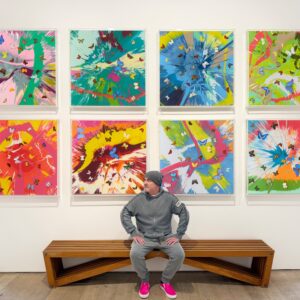
Vastari have published their 2020 Global Collector Trends Report, a series of surveys that provide crucial context for the museum industry. The week leading up to the report’s publication saw a four-part zoom panel discussion series titled Vastari Connects, touching upon topics such as private collections in storage, and museum patronage. A follow-up to the 2018 exhibition survey, the 2020 Report aims to find the missing link between collectors and museums by finding out who collects what and why, as well as where collectors buy from.
Vastari are an online intermediary that have been described as a “matchmaking platform” between public institutions and the private sector. By putting collectors and dealers in touch with institutions and their curators, Vastari’s approach facilitates and enables exhibition loans of works that would otherwise not gain enough visibility.
CEO and Co-Founder of Vastari Group, Bernadine Bröcker Wieder confirms that while this year’s reports are primarily written for the benefit of museums, the findings will be interesting to the art market as well: “We asked questions that the art market doesn’t usually focus on, about succession planning, about expectations from museums, about the drivers behind collecting. We tried to understand who these “custodians” of collections are, and how they think”.
Bernadine pointed out that the report asked collectors who own commercial galleries whether they consider themselves avid, leisurely or professional (professional collectors including dealers, art advisors and gallerists) in order to investigate how these professional collectors interact with museums. It is worth noting that the category of “Independent Collectors” refers to the 60+% of the survey respondents who have nothing to do with the market.
The first Zoom panel discussion on art storage highlighted some interesting benefits for museums in terms of borrowing from the private sector. While how much private art is in storage remains unknown, 2017’s Mendoza Review (an independent review of museums in the UK funded by the Arts Council) revealed that UK museums have up to 90% of their objects in storage. For example, over 70% of the V and A collection is in storage.
The Louvre is another example, with some 30,000 works on permanent display, while millions of works do not see the light of day, and remain in storage. However, despite this, the museum is not able to deaccession the works, which continue to incur maintenance and storage costs, though the museum’s off-site conservation centre plays some role in addressing this. By shedding light on the data surrounding art storage, will the Vastari reports help bring about further creative solutions to examples such as this?
Collections have been adopting more strategic approaches to digitising their collections in response to this for several years now – one only need take a look at Art UK’s website, which is the online home to artworks from over 3,300 public collections, but what about privately owned works?
Bernadine points out that first one has to identify the problem in order to deal with it:
“Our report offers an estimate of the percentage of collectors’ holdings that are in storage. Many numbers float around about the museum collections in storage, but there is less information about the private collections in storage. It’s smaller than the percentage of public collections in storage. By shining a light on the numbers, we hope that creative solutions will develop.”
She raises the point:
“Is it a bigger problem that taxpayers are funding such large publicly owned collections that never see the light of day, or is it a bigger problem that so many treasures are owned privately and not available to the public?”
At a time when museums are restructuring and thinking about what they stand for, and how they can earn an income in increasingly difficult times, knowing what the private sector looks like can indeed perhaps inspire new models for collaboration.
One example of a creative solution to the above problem has been presented by Rottderdam’s Museum Boijmans Van Beuningen, who have been working on completing what is being hailed as the world’s first publicly accessible art depot, enabling visitors to view the museum’s 151,000 objects all at once.
The second Vastari’s webinar series was the discussion surrounding the role of patrons and collectors in the current political climate. 2020 has been a year for the whole Western world to examine some of the skeletons in its closet, and needless to say museums and galleries have been called out on some of their approach to acquisitions, curating, and even staff management. When asked what this might mean, Bernadine’s response remains positive:
“When this crisis hit, in April, we never envisaged the massive effect it would have on our industry. There are so many issues in the museum industry, but there is also a lot of good. In the era of fake news, museums offer a safe space to question, analyse and discuss social and societal issues.”
She remains a firm believer that museums still have a role to play in helping ethically build a collection, and that Vastari can help achieve this:
“Exhibitions in other languages are called “expositions” – and that is the point. To expose things that are important, and preserve artefacts that help expose these truths. Vastari’s role is to open doors for new entrants who don’t have the little black books, and for those who want to be ethical in the sourcing of their content. What is exposed in museums are the things we will talk about in years to come. So let’s make sure that all subjects have equal access and opportunity to be in that cannon – so that we can make sure the conversations continue to be relevant, inclusive and important.”
The reports are available on the Vastari platform. To find out how to gain access visit vastari.com/products/report/
Collectors and museums wishing to join the Vastari community and to share their objects for loan should register on their website.







